A Wild Space late-summer night’s dream
Debra Loewen and her Wild Space Dancers made an enchanted forest of the Lynden Sculpture Garden Thursday night.
Two beautiful young women (Monica Rodero and Liz Herbst Fransee) in blue sundresses appeared on the far shore of a pond. In a pool of light amid the darkness, they moved in calm, sisterly unison, their forms exactly reflected on the glassy surface of the water. (That reflection rose from Jan Kellogg‘s ingenious lighting, which charged the evening with magic.)
Jade Jablonski, in a long black dress, waded into a smaller pond and became a water nymph amid floating pots of fire.
Lauren Hafner Addison emerged coyly — fingers first, then a hand, then a face, and finally all of her — in an unlikely red dress and heels, from the rough door of a woodshed. She regarded the audience suspiciously, in keeping with the dream-like nature of the whole experience, and gradually launched into a muscular dance that kicked up gravel and put her strong hips and shoulders on particular display.
Loewen treated three big, monolithic cor-ten steel sculptures, Antoni Milkowski‘s Salem No. 7 and Clement Meadmore‘s Upstart and Double-Up, in similar fashion. Respectively Paula Biasi, Fransee and Rodero caressed the steel, shaped their bodies to fit within the sculptures’ negative spaces, and used them for leverage and support. The sculptures did what human male partners usually do.
Loewen responded differently to more open works, such as George Sugerman‘s Triad and Mark Di Suvero‘s Lovers. People can move through these piece, not just around them. The remarkable Yeng Vang-Strath flitted, thrust, stretched and posed her way Sugerman’s piece, a sort of hallway formed by a series of X-shaped chambers. Peek-a-boo, we saw her darting about, mimicking rapid-fire the abstract positives and negatives around her. Michelle DiMeo and Dan Schuchart, the Lovers, appeared as barely visible spirits dashing about a grove far upstage of Di Suvero’s intersecting, tilted steel beams. They took the piece as cues for their own intersections beneath, near and on the steel.
Mystery and adventure permeate A Place for Everything, in which the audience is part of the dance. You move through the landscape, guided in part by docents and in part by dim luminaires. Josh Schmidt‘s exquisite music, for live, unamplified brass quintet, also draws you along, as it rises from the dark distance, always from new directions. The soft murmur of the crowd as it moved from place to place was part of the music, too, along with the singing of night birds and the rustle of leaves.
Wild Space will repeat A Place for Everything at 7:30 p.m. Friday and Saturday, rain date Sunday. For directions and ticket information, call Wild Space, 414 271-0712.
- Monica Rodero, Clement Meadmore’s “Upstart.” Photo by Tom Bamberger.
- Yeng Vang-Strath with George Sugerman’s “Triad.” Photo by Tom Bamberger.
- One long view of Debra Loewen’s “A Place for Everything.” Tom Bamberger photo.
- “Double Up,” Liz Herbst Fransee. Paul Gaudynski photo.
- Jade Jablonski. Paul Gaudynski photo.
- Wild Space dancers in natural habitat. Paul Gaudynski photo.
- “Olympus,” Allison Kaminsky, Joseph Pikalek. Paul Gaudynski photo.
- Yeng Vang-Strath within “Triad.” Photo courtesy of Wild Space Dance Company by Paul Ga.
Dance
-
Milwaukee Ballet Brings Back Orchestra
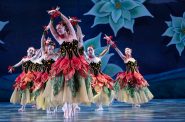 Jul 14th, 2025 by Bruce Murphy
Jul 14th, 2025 by Bruce Murphy
-
New Riverwest Company, Production Impresses
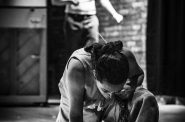 Feb 10th, 2020 by Brendan Fox
Feb 10th, 2020 by Brendan Fox
-
Milwaukee Ballet Show Remakes History
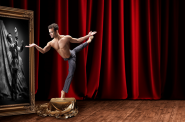 Feb 10th, 2020 by Catherine Jozwik
Feb 10th, 2020 by Catherine Jozwik


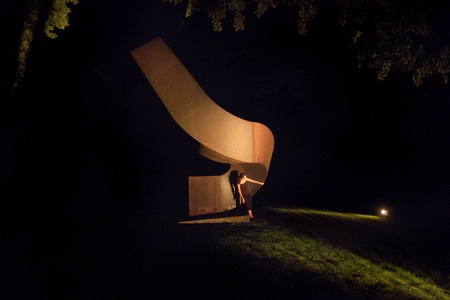
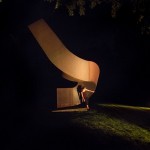
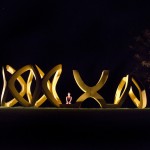
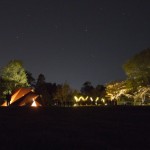
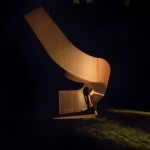
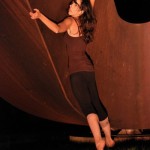
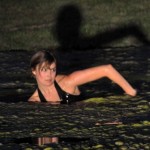
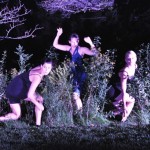
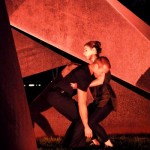

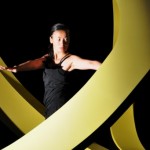
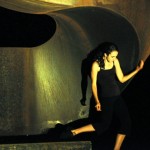



















Lovely review–your writing captures the experience so well. I saw it on Friday, and was transported to a magical place.
As usual a complete experience from Wild Space. A night full of stars was an additional bonus – although the dancers must have been uncomfortable in the cold.
The dances to the two Meadmore sculptures provided an interesting contrast. The “Double-Up” sculpture – shown in a number of the pictures shared above, offered obvious negative space – an opportunity for the dancer to move inside the sculpture and be embraced by it. The “Upstart” sculpture, by contrast, looked like a pair of quartz crystals pointing straight into the sky and offered no space to enter. The dancer was limited to interacting with a structure that did not respond to an outside element.
The lighting was a dramatically effective. Lynden Sculpture garden should arrange an evening tour of these transformed works of art.
Equally effective was the lighting of the environs. I was struck most by the use of a spotlight with sections of blue and red filters illuminating craggy fruit trees at the edge of a meadow. The result was an eerie 3-D effect.
Exploiting the illuminated reflections of dancers near pond’s edge had its downside, however. The dancers were placed some distance from the audience to get the necessary angle of view.